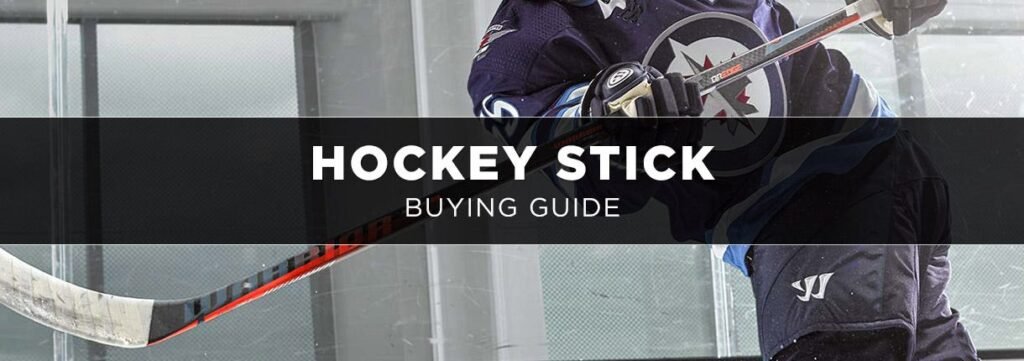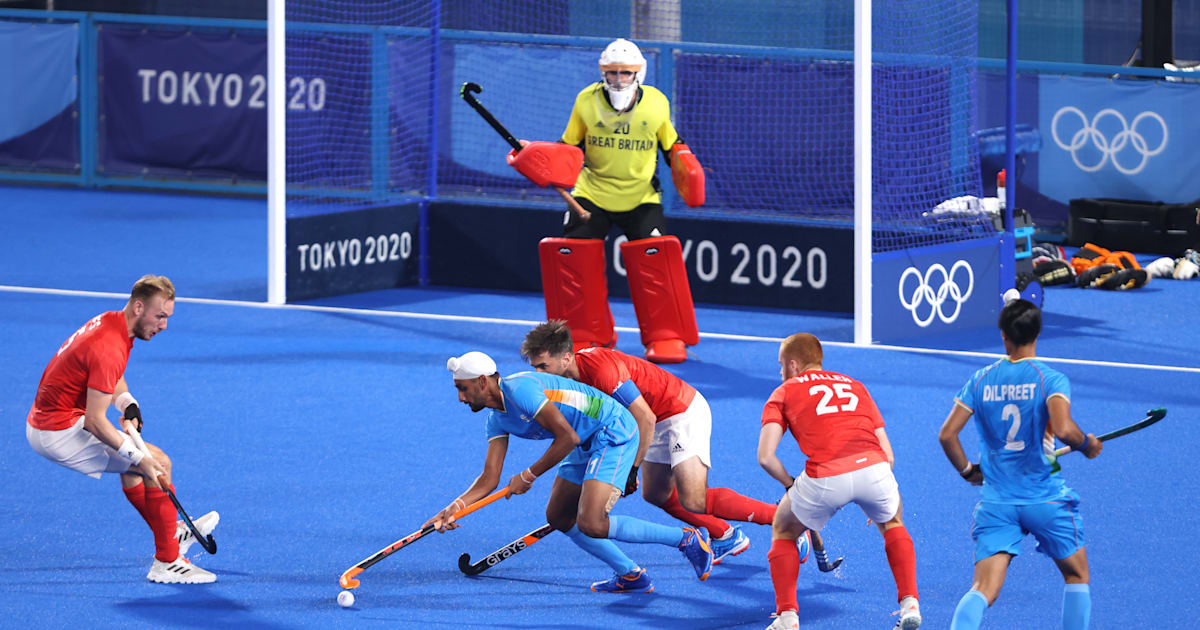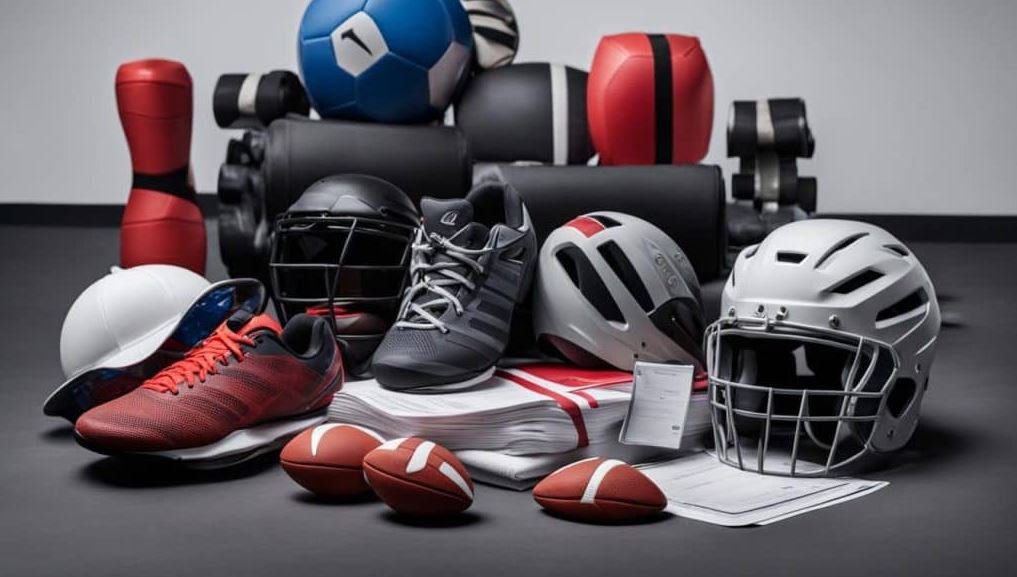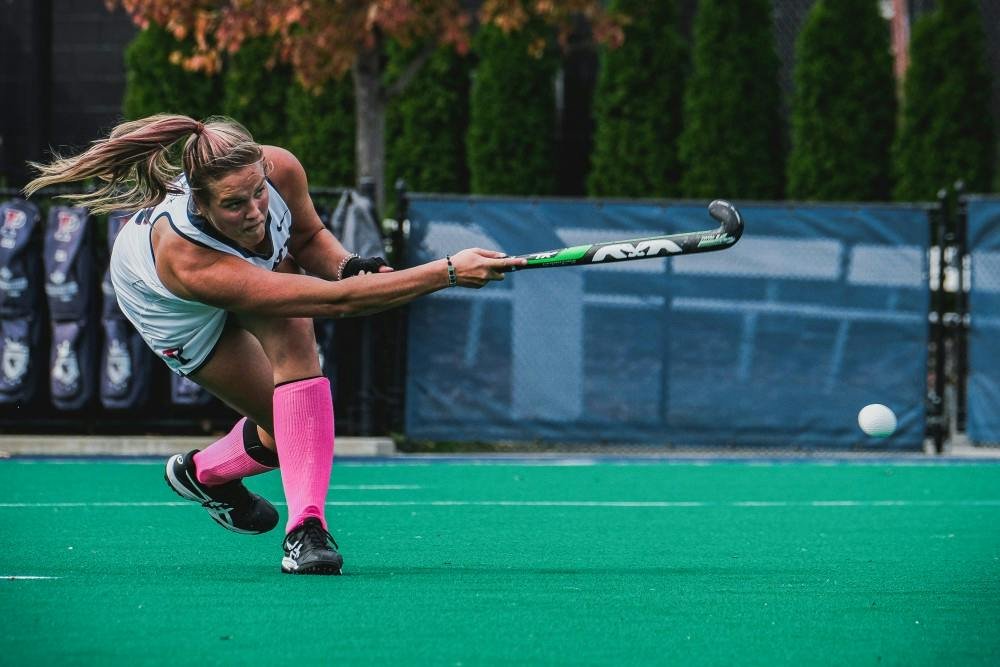As a beginner stepping onto the field hockey pitch, it’s essential to equip yourself with the right gear to enhance your performance and protect yourself during play.
In this field hockey equipment guide for beginners, I’ll walk you through the essentials, from choosing the perfect stick to selecting the right protective gear. Let’s dive in and ensure you’re fully prepared for your field hockey journey.
Choosing the Right Field Hockey Stick

When starting out in field hockey, the stick is your most crucial tool. It’s an extension of your body on the field, so finding the right one is paramount.
Stick length
The length of your field hockey stick directly impacts your control and comfort on the field. A stick that’s too long can be unwieldy, while one that’s too short can cause back strain. To find the right length, stand with your stick next to you; the top should reach between your hip bone and the top of your thigh. For most players, this translates to a stick length ranging from 34 to 38 inches.
Stick weight
Stick weight affects your swing speed and control. Beginners often benefit from a lighter stick, around 535 to 560 grams, which offers better control and ease of handling. As you develop your skills, you might prefer a heavier stick for more power behind your hits.
Stick material
Modern field hockey sticks are made from a blend of materials, including wood, fiberglass, carbon, and aramid. Wood offers a softer touch, ideal for learning the basics, while fiberglass provides durability and power. Carbon adds stiffness and power for experienced players, and aramid helps with vibration dampening. Beginners should look for a stick with a good balance of fiberglass and wood for an optimal mix of control and durability.
Understanding Field Hockey Balls
The ball is as important as the stick in field hockey. It’s what you’ll be maneuvering around the field and aiming into the goal.
Size and weight
Field hockey balls are standardized in size and weight to ensure consistency in play. They have a circumference of 224-235 mm and weigh between 156-163 grams. This uniformity allows players to develop a consistent touch and feel for the game.
Material and construction
Most field hockey balls are made of hard plastic and have a hollow center. They may also have a dimpled surface to reduce hydroplaning on wet turf. For practice, especially for beginners, there are lighter balls available that can help in developing skills without the risk of injury.
Essential Protective Gear for Field Hockey

Safety is paramount in any sport, and field hockey is no exception. Here’s the protective gear you’ll need to stay safe on the pitch.
Mouthguard
A mouthguard is a non-negotiable piece of equipment. It protects your teeth and reduces the risk of concussion. Look for one that’s comfortable, durable, and allows you to speak and breathe easily.
Shin guards
Shin guards protect your legs from flying balls and swinging sticks. They should cover the entire shin and fit snugly without restricting movement. Many come with ankle protection for additional safety.
Gloves
Field hockey gloves provide grip and protect your hands in cold weather and from impacts. Beginners might opt for gloves with full finger coverage for extra protection.
Goalkeeper equipment
If you’re a goalkeeper, you’ll need specialized equipment, including a helmet, leg guards, kickers, and chest protection. This gear is bulkier and designed to absorb the high impact of shots on goal.
Appropriate Footwear for Field Hockey
The right footwear can make a significant difference in your agility and comfort on the field.
Cleats vs. turf shoes
Depending on the surface you play on, you’ll choose between cleats and turf shoes. Cleats are better for grass fields, offering more traction, while turf shoes are designed for synthetic fields and provide better grip on a flat surface.
Ankle support
Ankle support is crucial in preventing injuries. Look for shoes with sufficient padding and a design that supports lateral movement. A good fit is essential to avoid blisters and ensure stability.
Additional Accessories for Field Hockey Players
Finally, there are a few additional accessories that can make your field hockey experience more enjoyable and efficient.
Field hockey bag
A good field hockey bag will have separate compartments for your stick, shoes, and protective gear. It keeps your equipment organized and makes transportation easier.
Water bottle
Hydration is key in any sport. A durable water bottle that keeps your water cool and can be easily accessed during breaks is a must-have.
Training aids
As a beginner, training aids like cones, agility ladders, and rebounders can help improve your skills. They’re great for practice sessions to work on your footwork, speed, and stickhandling.
In conclusion, having the right field hockey equipment is essential for beginners to learn the game effectively and stay safe. Use this field hockey equipment guide for beginners to make informed choices as you gear up for your field hockey adventure. Remember, the right equipment can enhance your performance and enjoyment of the game, so choose wisely and hit the field with confidence.
FAQ
-
What equipment do you use in field hockey?
Equipment: A hard ball and a field hockey stick, typically wooden, are used to play throughout games and practices. Each player also wears shin guards and mouth guards for protection, while the goalkeeper wears a face mask, gloves, chest padding, and leg guards to keep them protected.
-
What does my daughter need to play field hockey?
Your child will need a field hockey stick (as a general rule, the length of the stick should measure up to your child’s hip), shin guards, an extra mouth guard, field hockey goggles and cleats.
-
What equipment do I need to start playing hockey?
For hockey, the necessary gear includes a stick, skates, a helmet with a face mask or visor, gloves, elbow pads, shoulder pads, and shin guards. Other items, such as a mouthguard and protective cup, may be needed depending on the level of play.








